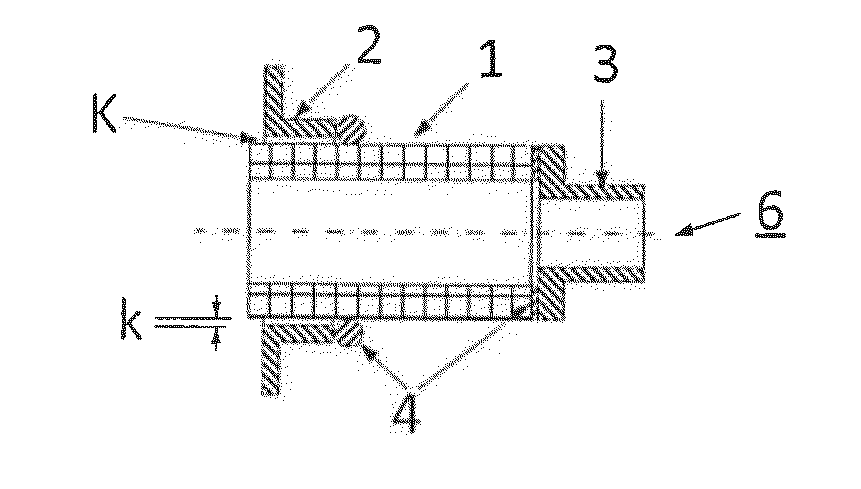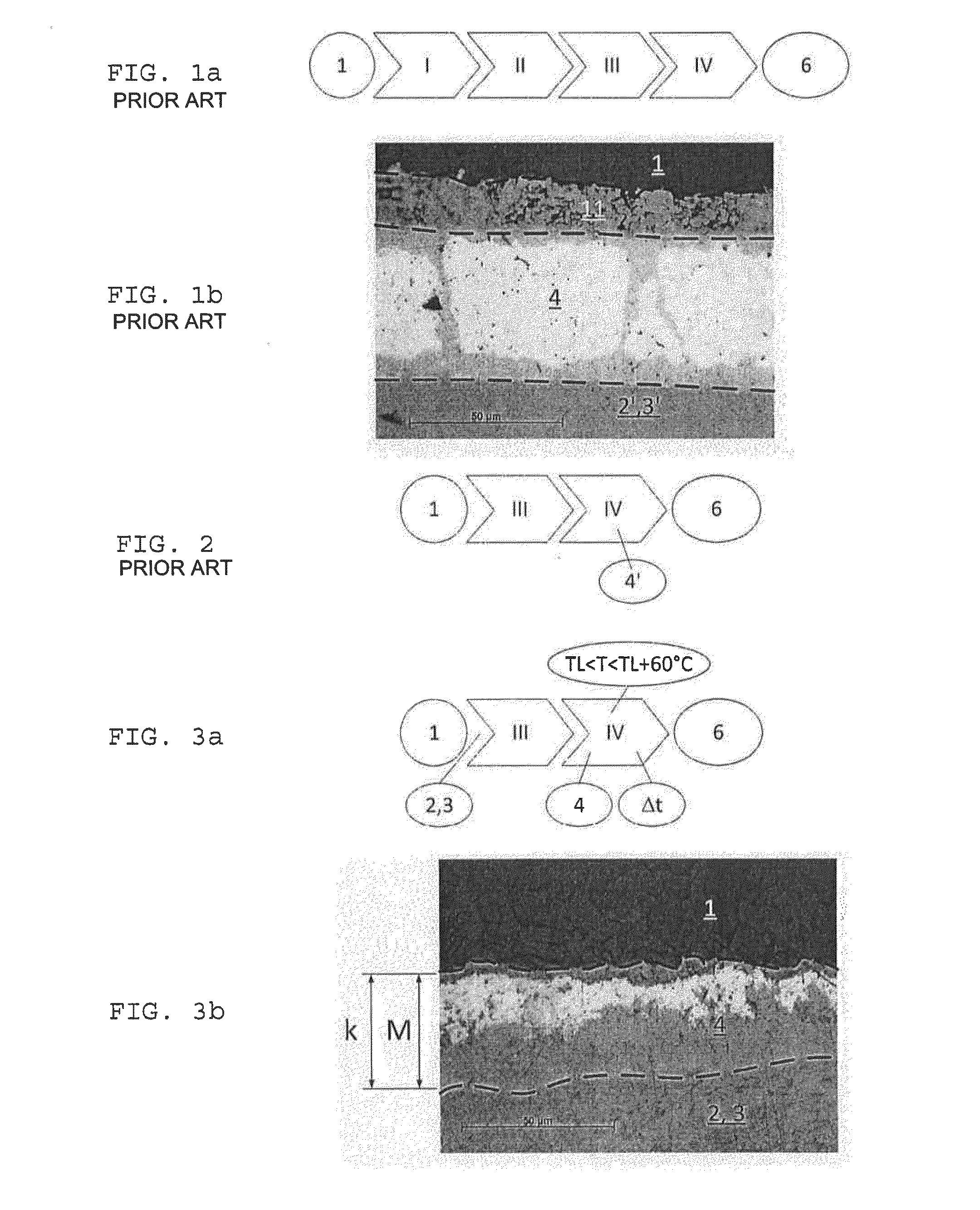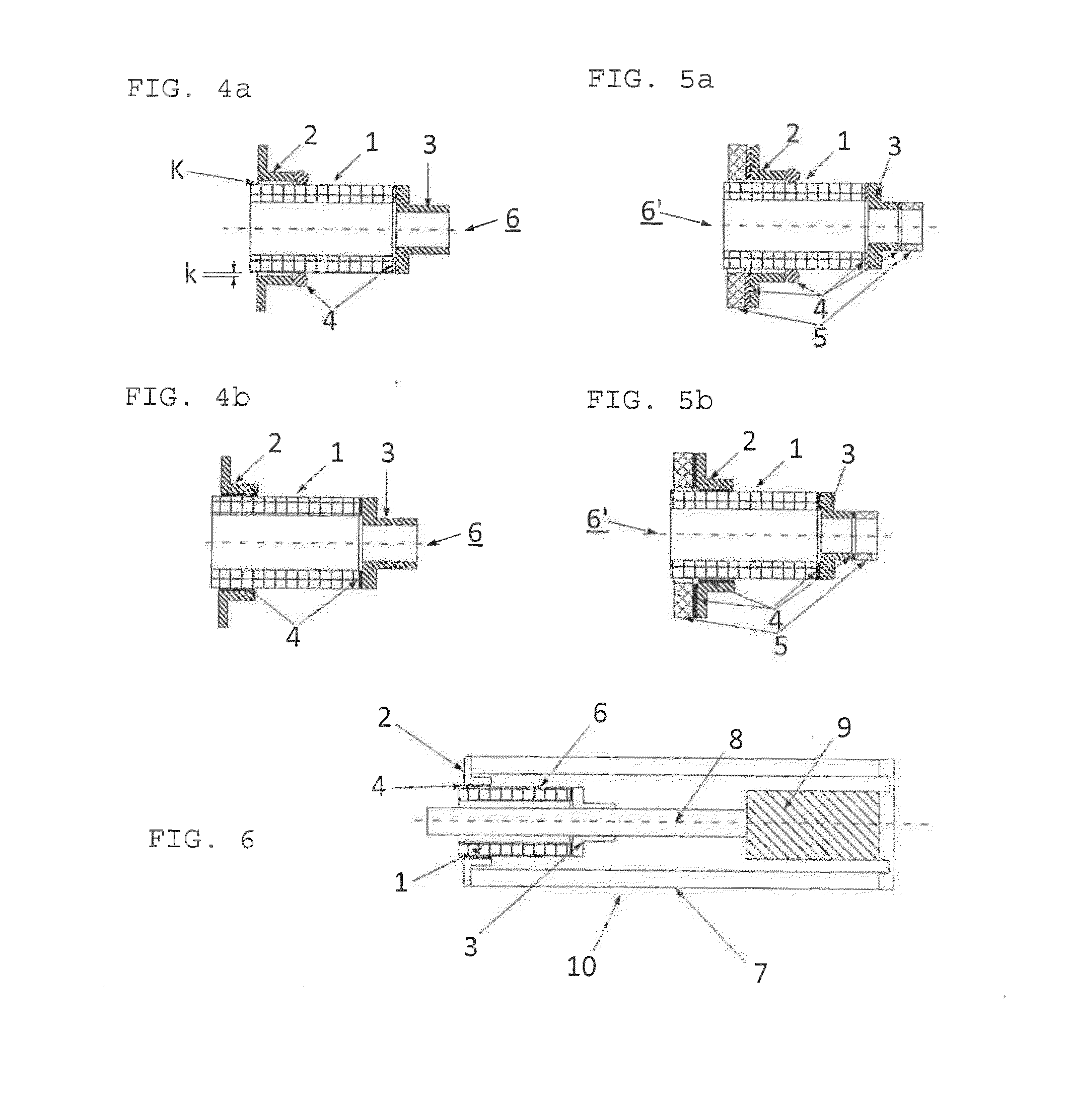Method for producing a metal-ceramic soldered connection
a technology of metalceramic and soldering connection, which is applied in the direction of welding/soldering/cutting articles, welding/cutting media/materials, and solvents, etc., can solve the problems of difficult further processing difficult to achieve small dimensions of ceramic bodies and metal parts, and difficulty in procuring, etc., to achieve the effect of low cost and easy operation
- Summary
- Abstract
- Description
- Claims
- Application Information
AI Technical Summary
Benefits of technology
Problems solved by technology
Method used
Image
Examples
Embodiment Construction
[0036]The method according to the invention for producing a materially-bonded metal / ceramic solder connection, which is described below, is described on the basis of a ceramic duct 6, as illustrated in FIGS. 4-6, which is created by means of a materially-bonded connection of an uncoated ceramic body 1 to a metal part 2, 3. The coefficient of thermal expansion of the ceramic body 1 and the metal part 2, 3 are chosen to be tuned to one another, that is to say similar to one another. At least 80% of the ceramic body 1 should consist of aluminium dioxide (sapphire), silicon dioxide or a mixture thereof. According to the invention, it is uncoated and correspondingly has no metallised and nickel-plated ceramic-body surface. This saves a work step in the method according to the invention compared to similar methods according to the prior art.
[0037]Conventional and relatively inexpensive metallic non-active solders are used as solder 4. It is important that the solders 4 used are eutectic o...
PUM
| Property | Measurement | Unit |
|---|---|---|
| Temperature | aaaaa | aaaaa |
| Fraction | aaaaa | aaaaa |
| Fraction | aaaaa | aaaaa |
Abstract
Description
Claims
Application Information
 Login to View More
Login to View More - R&D
- Intellectual Property
- Life Sciences
- Materials
- Tech Scout
- Unparalleled Data Quality
- Higher Quality Content
- 60% Fewer Hallucinations
Browse by: Latest US Patents, China's latest patents, Technical Efficacy Thesaurus, Application Domain, Technology Topic, Popular Technical Reports.
© 2025 PatSnap. All rights reserved.Legal|Privacy policy|Modern Slavery Act Transparency Statement|Sitemap|About US| Contact US: help@patsnap.com



